The word “equity” is certainly the new buzzword in public schools. The U.S. Department of Education has prioritized “equity” and even holds an “equity summit.” The Wisconsin Department of Public Instruction likewise devotes significant resources “equity,” ordering some school districts to hire a “Director of Equity” or “equity consultants,” and encouraging many more to adopt policies called “equity non–negotiables.”
But what exactly is “equity” in education?
Finding a uniform definition proves elusive. Many definitions are couched in well-meaning jargon like “access,” “resources,” and “opportunity.” Yet the core of equity in education is about race. And this is where the legal problems begin. Whenever a public institution decides to use race in the distribution of resources, it becomes subject to intense constitutional scrutiny. In addition to the constitutional ban on race discrimination, federal and state law likewise prohibit treating students differently on account of race.
Unfortunately, this racially discriminatory form of “equity” appears to be spreading through our public schools.
Over the past year, the Wisconsin Institute for Law and Liberty (WILL) has heard from parents and collected stories about the highly racialized core of “equity” in education. Deeply influenced by the much-maligned Critical Race Theory, schools have created new policies and adjusted old policies to achieve racial equity that all-to-often divides students based on race. DPI, for example, explains that advancing educational equity means “interrupting whiteness.”
Based on what we have seen, the current use of “equity” cannot easily be decoupled from race discrimination. Schools use the phrase “equity” as a shorthand to indicate that they are committed to identifying and eliminating all racial disparities. While such goals may be laudable, the devil’s clearly in the details. A school’s method of eliminating racial disparities oftentimes includes treating students differently based on race. That’s illegal. But schools either don’t know this or don’t care. As shown from the documents below, schools embracing “equity” remain steadfast in their goal of equal outcomes for all students regardless of the consequences.
In short, any use of the word “equity” should raise red flags in the minds of parents who support principles of equality and non-discrimination.
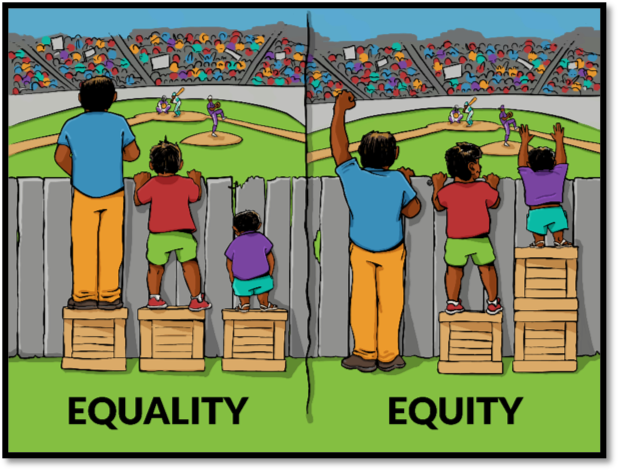
“Equity often appears unfair” – Probably because it is
This familiar cartoon, which we’ve seen as a teaching aid in multiple school districts, aptly demonstrates the problem with equity: to aim for equal results naturally demands treating students unequally. And unequal treatment of students based on race raises significant legal and ethical issues. One teacher in the Waukesha School District even acknowledged the “unfair” nature of equity by instructing students that equity means “leveling the playing field.” Here is that teacher’s definition of “equity”:

Public schools routinely “center” equity throughout all aspects of the educational system, including instruction. Below is a graphic from the Sun Prairie Area School District showing that in the context of student instruction (i.e. what students are actually taught in schools), “equity” is the most important factor and “disrupting inequity” is the key to all instruction.
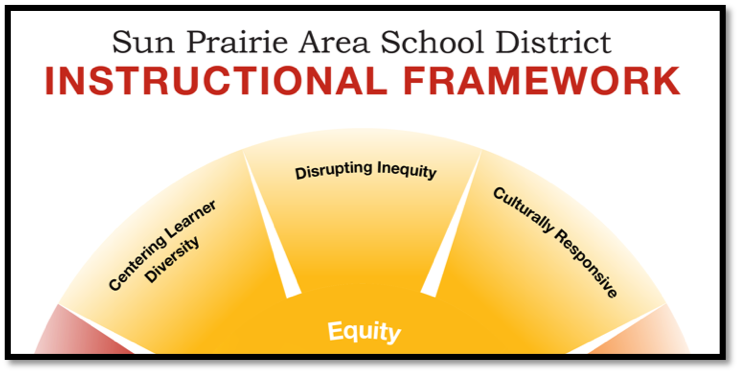
“Equity” is the key strategy in many public-school classrooms; so now let’s look at what this means in practice.
“Prioritize your African American students”
In 2022, an employee of the Madison Metropolitan School District leaked to WILL a shocking example of blatant race discrimination in elementary education resulting from the district’s devotion to “equity.”
MMSD’s policy for “small instructional groups”—groups to help children with reading, foundational skills, and math—contains an explicit racial classification. Elementary school teachers are instructed to “prioritize your African American students meeting with you first and more often.” But the discrimination does not stop there. English learners (often the very minority students that “equity” seems to target) are placed at the back of the line: “Prioritize your English Language learners meeting with you second and more often.” Below is the screenshot from Madison’s policy:
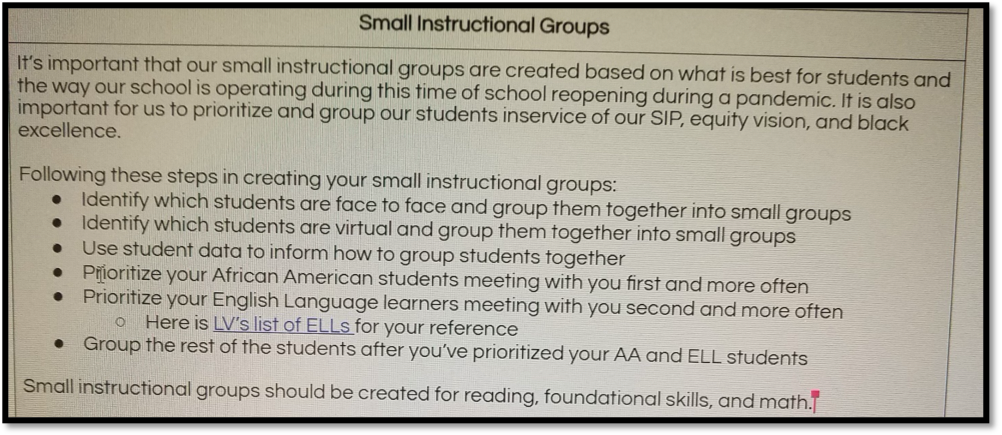
Unfortunately, this is not the only example of how school districts are allocating resources based on race. In the Middleton Cross Plains Area School District, official district policy is to provide a “particular focus on our black and brown students.” MCPASD also argues that “equity” requires distributing resources to a particular “group of students,” which means non-white students. Middleton also correctly explains that “equity does not mean equal.”
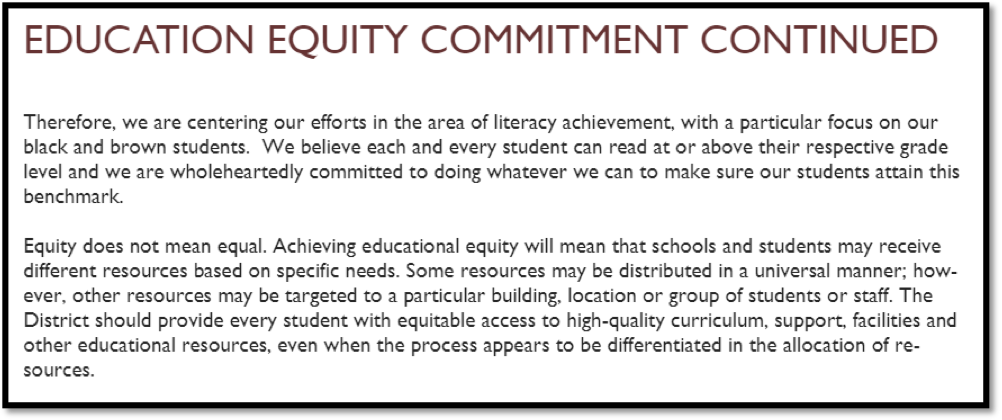
Other school districts use different phrases and emphasis. In the northeast Wisconsin district of Howard-Suamico, the school sent out an email to parents of Black students explaining that the district will now “offer[ ] intentional programming [and] supports for our Black or African American students.” The district created a “Student Equity group” that meets at a special time and obtains distinct “learning opportunities.” The district hopes to obtain “lasting equitable change for our district and community.”

In the Elmbrook School District, a set of “non-negotiables” mandated different treatment based on race. Here is their policy from January 2021, which was subsequently rejected following a school board election:

This policy has led to a troubling admission from Elmbrook. In March 2022, WILL published a report from an Elmbrook Assistant Superintendent, who claimed that non-discrimination laws do not apply to white students. Elmbrook subsequently admitted that they didn’t mean what they said, but here is what they said as of March 2022:

In 2020, teachers in the Arrowhead School District were similarly trained that “there is no such thing as reverse discrimination.” The image below was part of a set of training materials that spurred, in part, the Arrowhead school board to implement significant changes to teacher training and curriculum:

These examples of equity in practice disrupt classic American values such as equality and colorblindness. Racial discrimination—the practice of treating one race different from another—used to be clearly understood as illegal and immoral in America. Yet today, in the name of equity, schoolteachers can seemingly get away with ideas like “prioritize your African American students.” Such practices appear to be sanctioned by the wrongheaded claim that “there is no such thing as reverse discrimination.” In other words, you can’t discriminate against whites. This theory pervades too many Wisconsin educational institutions.
When such harmful ideas are allowed to percolate, there is really no limit to change in the name of “equity.” As we can see from the next examples, without a limiting principle such as nondiscrimination, equity simply has no guardrails and no logical stopping point.
“Segregation now, segregation forever”
Those are the hauntingly racist words of Gov. George Wallace in 1963. But nearly 60 years later, racial segregation is making a comeback all in the name of “equity.” WILL has discovered several instances of explicit racial segregation in our public schools.
From June 21–28, 2021, the Sun Prairie Area School District held five racially segregated “community conversations,” dividing up participants as “East Indian,” “Asian,” “White,” “Black,” and “Latinx.” The Google sign-up form is below. WILL called out SPASD in this letter, but SPASD defended the segregation by arguing it was necessary to “build space” for “racial equity” in our community.
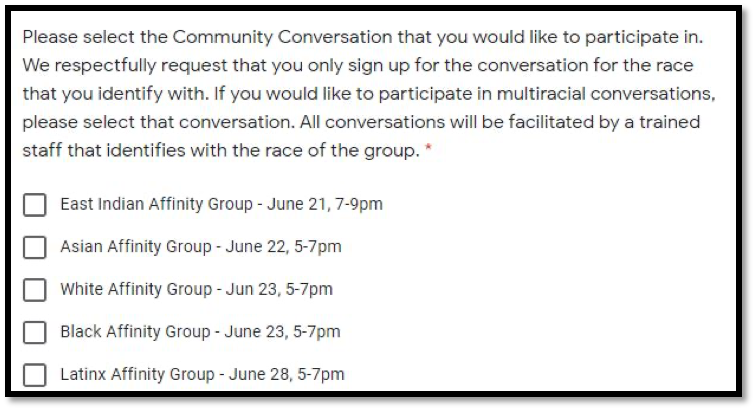
The Madison Metropolitan School District has also segregated students and parents on multiple occasions. In July 2020, WILL warned MMSD that its practice of racial segregation was illegal. Again in April 2021, WILL wrote MMSD regarding another incident in which parents were racially segregated (screenshot below). Fortunately, the principal involved apologized.
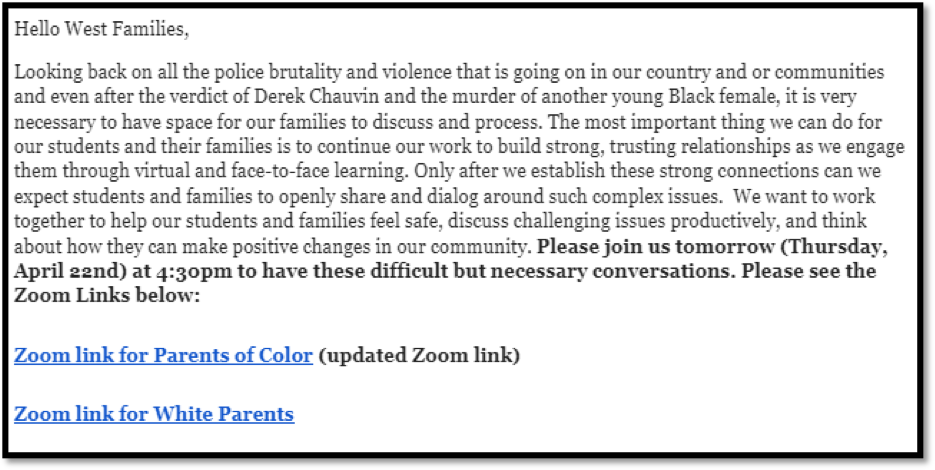
Middleton Cross Plains Area School District has also racially segregated students. During state-mandated STAR testing, 9th and 10th grade students were placed in testing rooms based on race. Though the administrator involved in the segregation resigned, the school principal involved never objected to the segregation.
That wasn’t Middleton’s only experiment with racial segregation. A few months after the STAR test segregation, a Middleton music teacher segregated 4th grade students in order to teach students a lesson on race. White students were excluded from using musical instruments while students of color were given the opportunity to play with instruments. The teacher said the lesson was necessary to “feel what it felt like to be left out.”

We continue to hear reports from public-school employees, parents, and students describing various instances of racial segregation including racially segregated bathrooms, staff meetings, and field trips, but more work will need to be done to expose these discriminatory programs done in the name of “equity.”
Opportunities for some, not for all
Equity results in other similar types of racial classifications. Several school districts offer and support race-based affinity groups. According to a bulletin board at a Waukesha area school, students should “meet in affinity groups based on race” for “social connections, share opinions and experiences, or even take action in your community.” The groups are organized and supported by teachers, but also labeled “student led.”
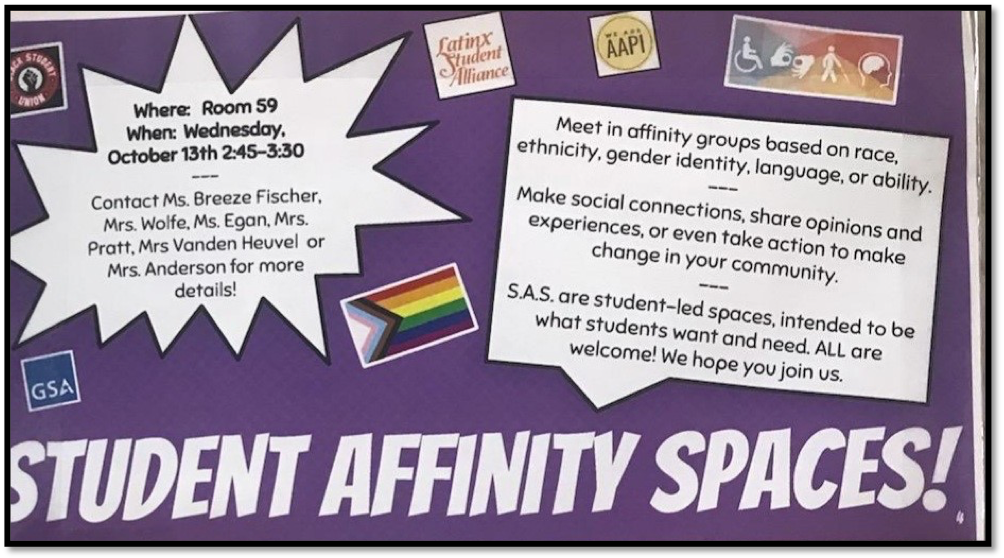
While some may question the harm of a student-led race-based affinity group, such as a “Black Student Union,” most reasonable people would condemn a “white affinity group.” But such a hypothetical is unreasonable; no one would actually suggest a “whites only group.”
Or would they?
Wisconsin’s Department of Public Instruction does. The agency promotes “white affinity groups,” which, according to DPI, will provide “time and space to work explicitly and intentionally on understanding white culture and white privilege and to increase one’s critical analysis around these concepts.” DPI explains that “in a white racial affinity group, white people are responsible for doing their own learning about racial equity.” DPI does more explaining below:
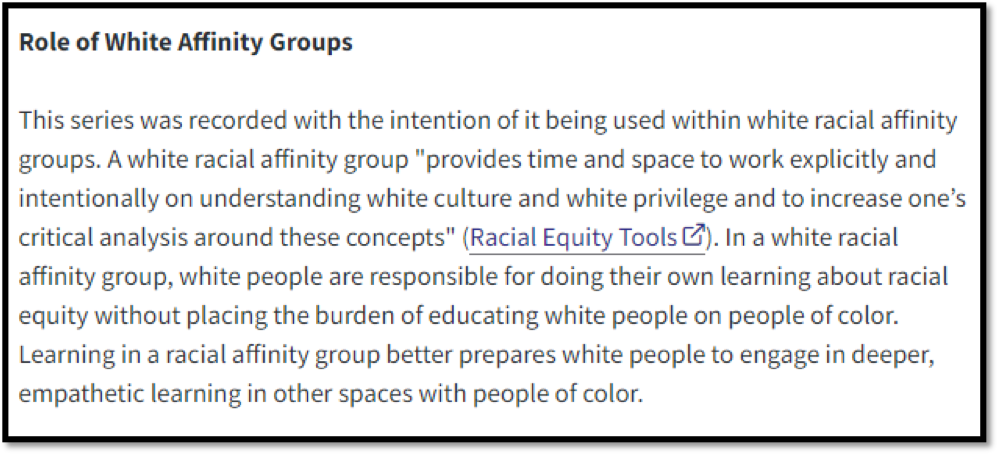
Providing separate opportunities for separate races does not stop at affinity groups.
In August 2021, Madison Metropolitan School District partnered with the City of Madison to offer a program only for “Black/brown girls in the Madison area entering 9th grade.” White girls were not allowed. In a grant application to expand their program, the “Dear Diary” organizers explained that their program is “rooted in equity” because everything that Black people “have learned is acceptable has been rooted in white supremacy.”
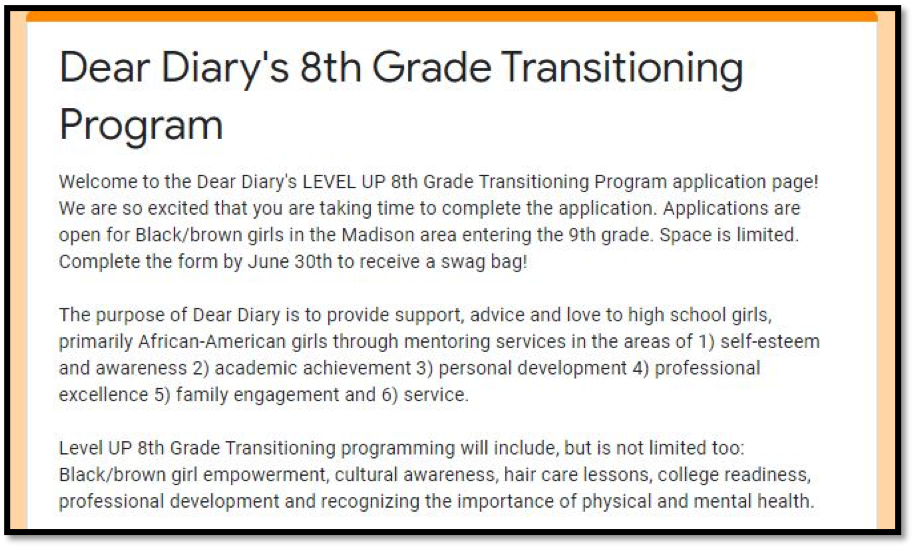
Burlington Area School District has similarly engaged in race-based programing, offering a “holiday meal box,” but curiously only for “Hispanic families.”
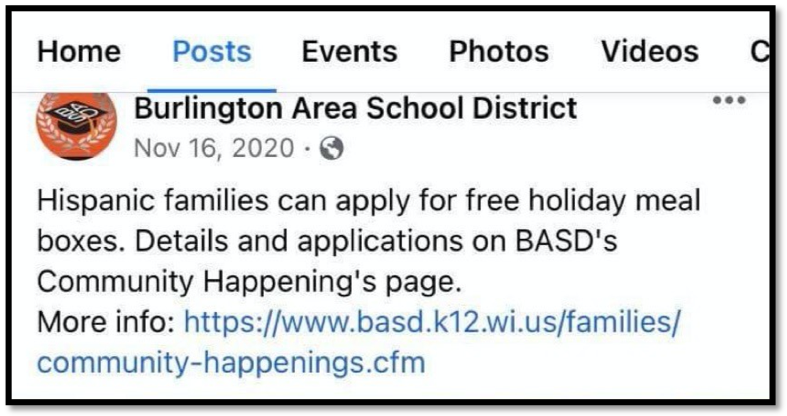
Sun Prairie Area School District also offers distinct benefits and programs for non-white students. In February 2022, the District organized and financially supported a “Black Carpet Gala,” which was an event to promote Black Excellence. And for the past several years, Sun Prairie organizes and supports the Black Excellence Achievement Awards (or “BEAM Awards”), which “honor Black youth and adults for the many ways they bring excellence to Sun Prairie.”


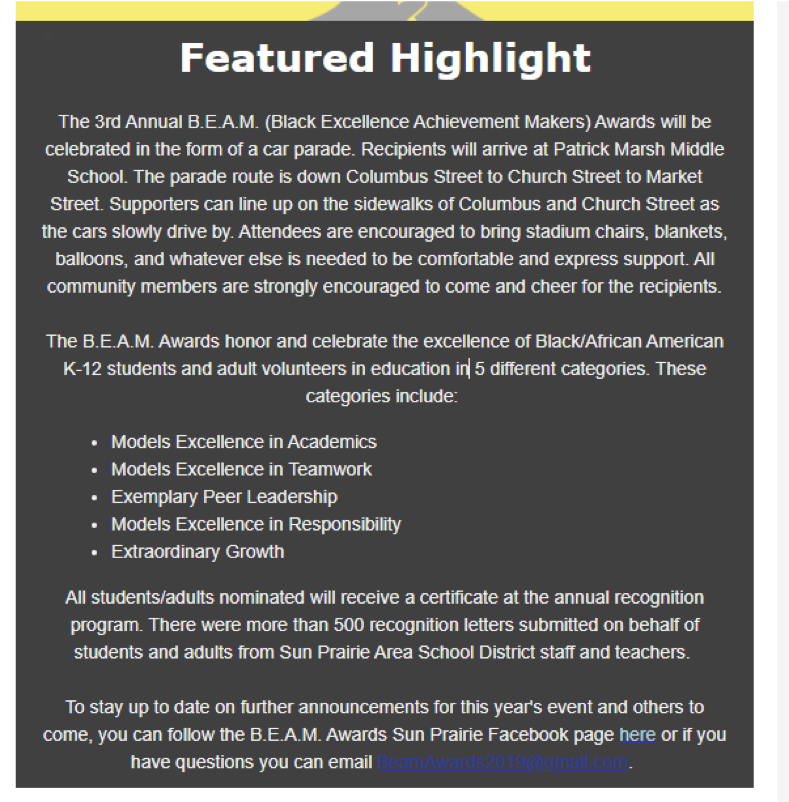
Lowering the Bar
Another troubling aspect of “equity” is the trend of lowering educational expectations. Sun Prairie Area School District cancelled all “high-stakes test” (a.k.a. “finals”), labeling final exams “an inequitable obstacle.” Eliminating these tests was important because of the school district’s “goals, especially relating to equity.”
Other districts have moved past finals and toward “equity in grading” on every assignment. In 2020, the Madison Metropolitan School District adopted “more accurate and equitable grading practices to better serve students and families.” Among other things, the policy sets a 50% floor for each assignment.
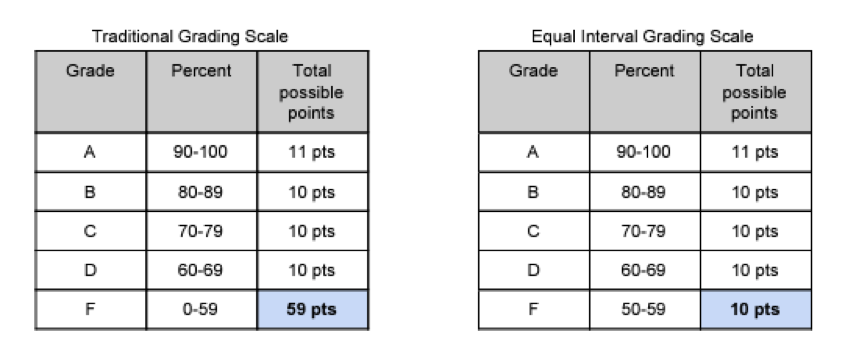
This is not unique to Madison. A teacher in the Elmbrook School District recently attempted to explain the following grading scale to a parent: “Since the quiz was only out of 5 points, I did a conversion to make the quiz out of 10. This way, the percentages in the gradebook reflect what I think is fair.” The teacher concluded by decrying the “damaging impacts of sub 50% grades.”
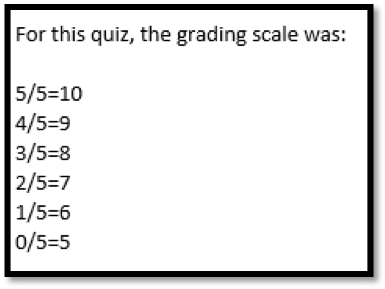
In the book, Grading for Equity (which has been used by multiple Wisconsin schools), the author touts that changing grading scales “virtually eliminates” the racial disparity “in the percent of Ds and Fs assigned to African American students compared to white students.”
At its extreme, equity in grading calls for a literal “slowing down” of all classroom progress to the detriment of high achievers. As one teacher in Lodi School District said, “slowing down the class is equity!”

There’s much more work to do…
WILL is closely watching the development of “equity” in Wisconsin public schools. Below is just a sample of what our students are facing in the public schools.
As explained above, when equity leads to race discrimination, it breaks the law. If you see something in your district and would like WILL to investigate or highlight the issue, please email me at [email protected].
And if you would like WILL provide you with legal advice, you may fill out a referral form at www.will-law-org/contact-a-lawyer.
